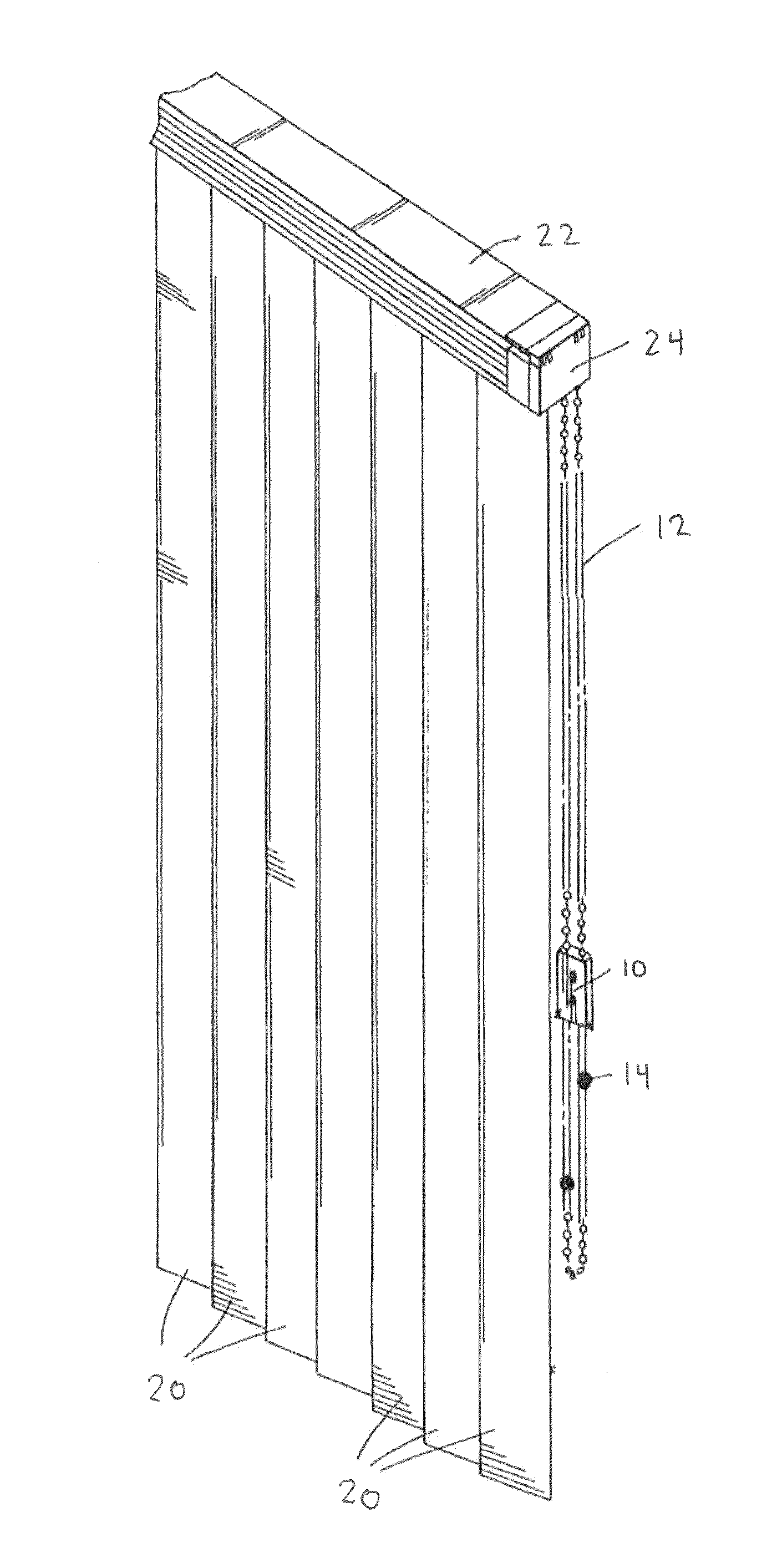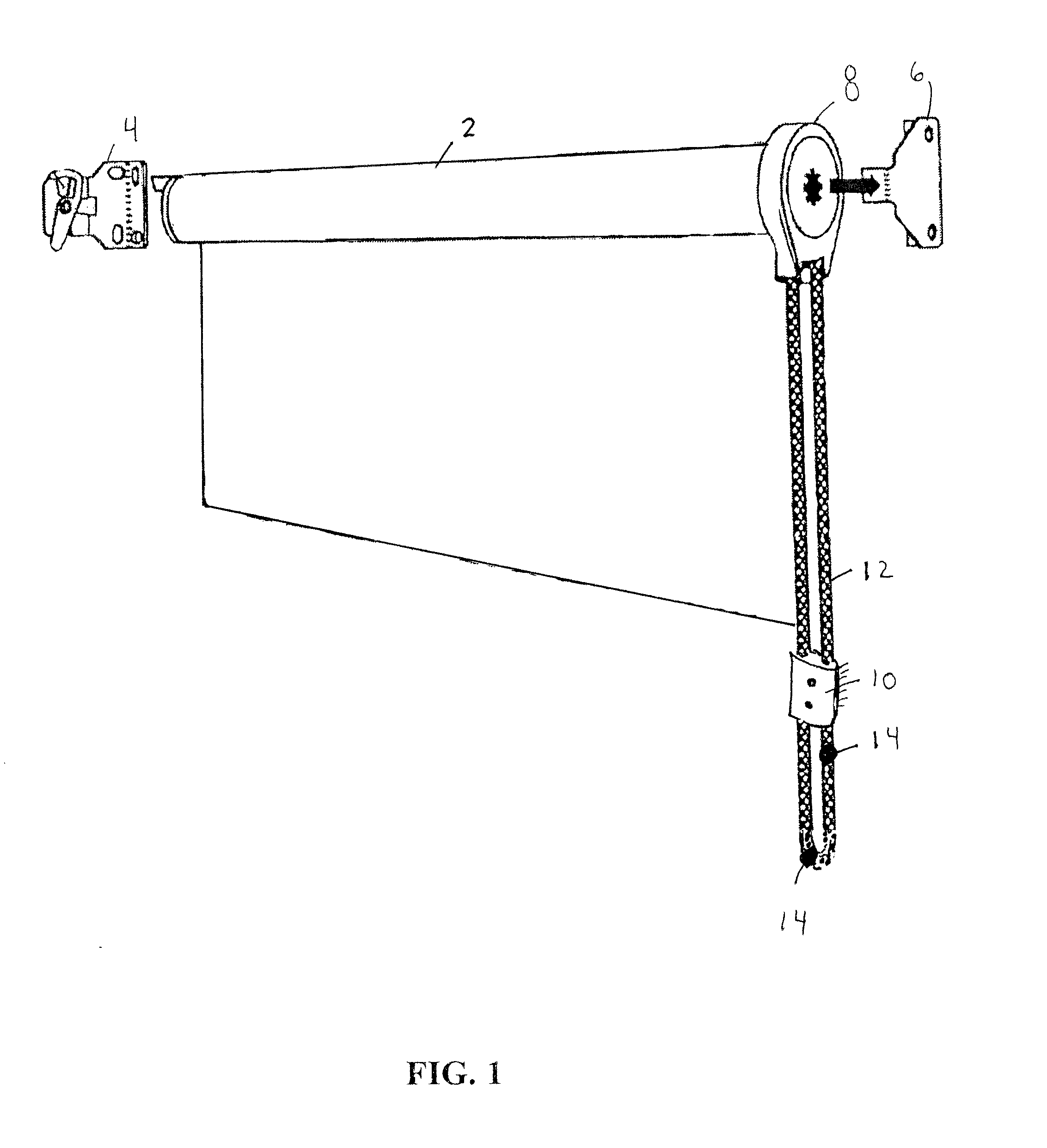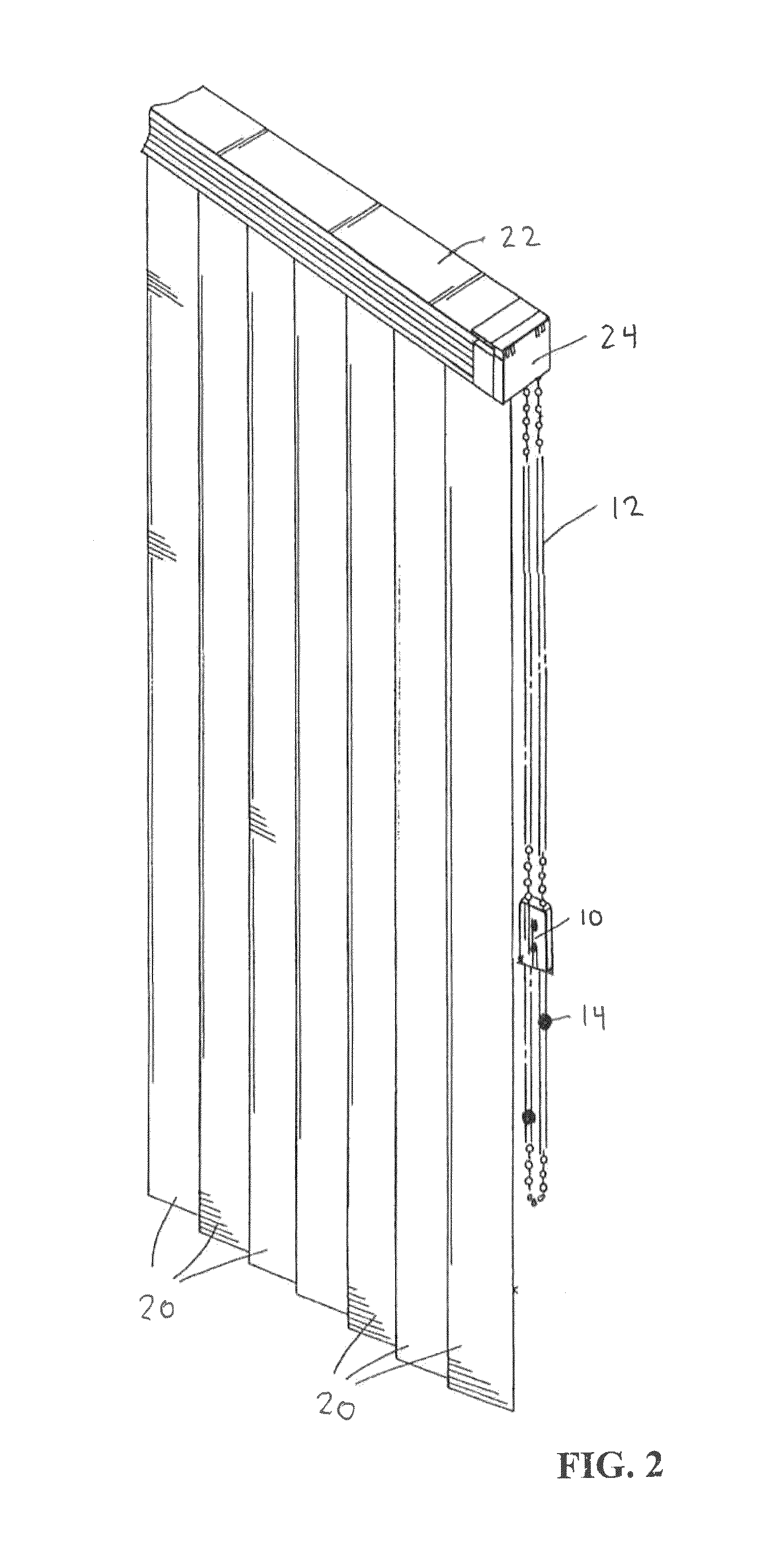Control device for shades
a control device and roller shade technology, applied in the direction of door/window protective devices, building components, construction, etc., can solve the problems of affecting the operation of the operator, introducing unnecessary wear and tear to the roller shade mechanism, and other damage to the clutch components
- Summary
- Abstract
- Description
- Claims
- Application Information
AI Technical Summary
Benefits of technology
Problems solved by technology
Method used
Image
Examples
Embodiment Construction
[0030]Referring to FIG. 1, a roller shade 2 is supported by a pair of brackets including a end plug bracket 4 and a clutch bracket 6. A clutch 8 is provided at an end of shade 2 and is supported upon clutch bracket 6. Clutch 8 is engaged to rotate the roller shade into a desired position by a pulling manipulation of chain 12. A control device 10 of the present invention engages chain 12 at a location remote from the clutch 8. Preferably control device 10 is secured to a window frame or molding or nearby wall surface.
[0031]Control device 10 includes a body adapted to receive portion of chain, such as ball chain 12. Other chains, such rope or segmented metal chains may also be used. Ball chain 12 is utilized as described above to control movement of a roller shade 2. Ball chain 12 is provided with stoppers 14, which in this embodiment, are larger ball elements. Ball chain 12 may include multiple ball stoppers to control movement of the roller shade. For example, one ball stopper 14 ma...
PUM
 Login to View More
Login to View More Abstract
Description
Claims
Application Information
 Login to View More
Login to View More - R&D
- Intellectual Property
- Life Sciences
- Materials
- Tech Scout
- Unparalleled Data Quality
- Higher Quality Content
- 60% Fewer Hallucinations
Browse by: Latest US Patents, China's latest patents, Technical Efficacy Thesaurus, Application Domain, Technology Topic, Popular Technical Reports.
© 2025 PatSnap. All rights reserved.Legal|Privacy policy|Modern Slavery Act Transparency Statement|Sitemap|About US| Contact US: help@patsnap.com



